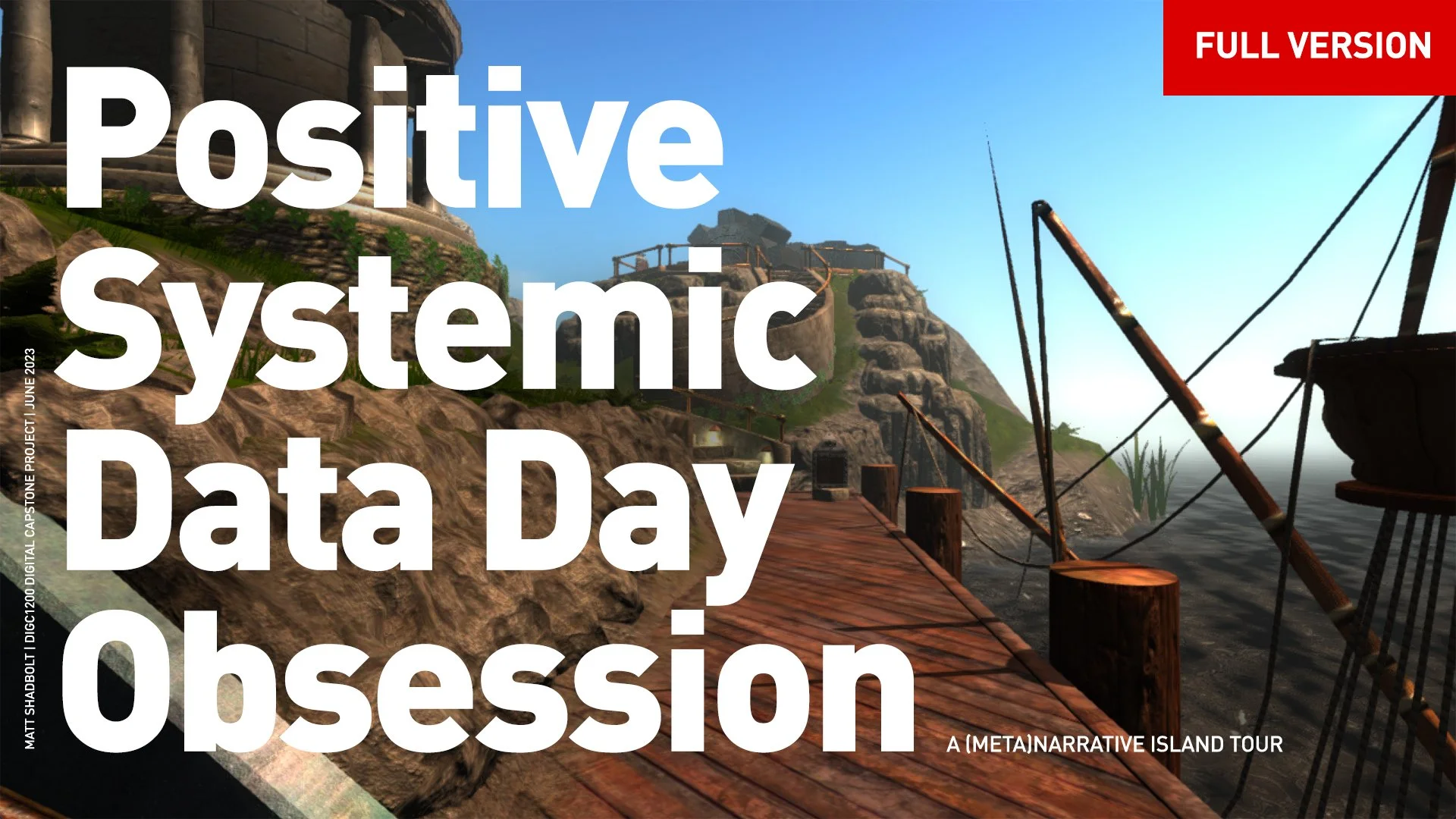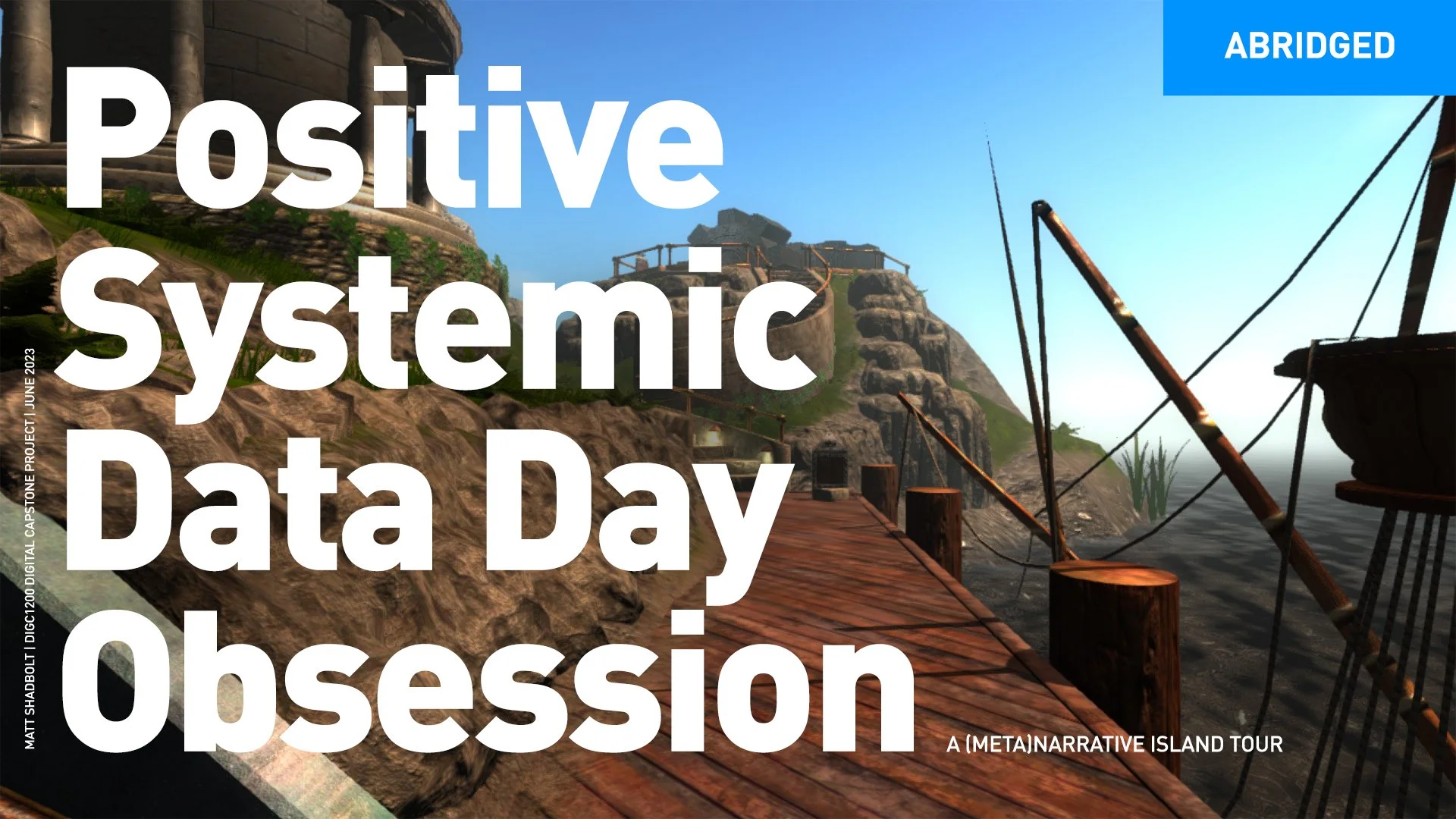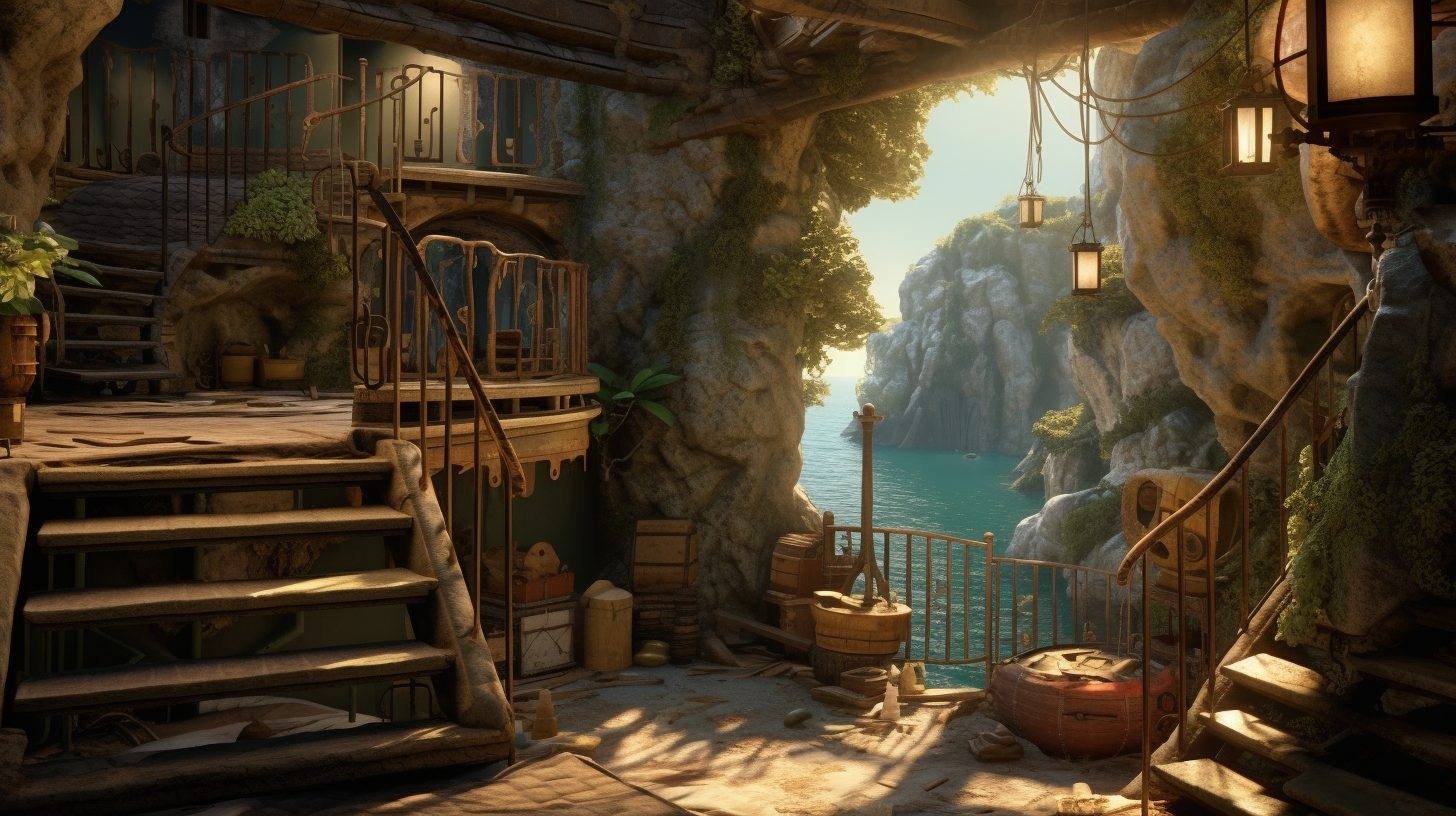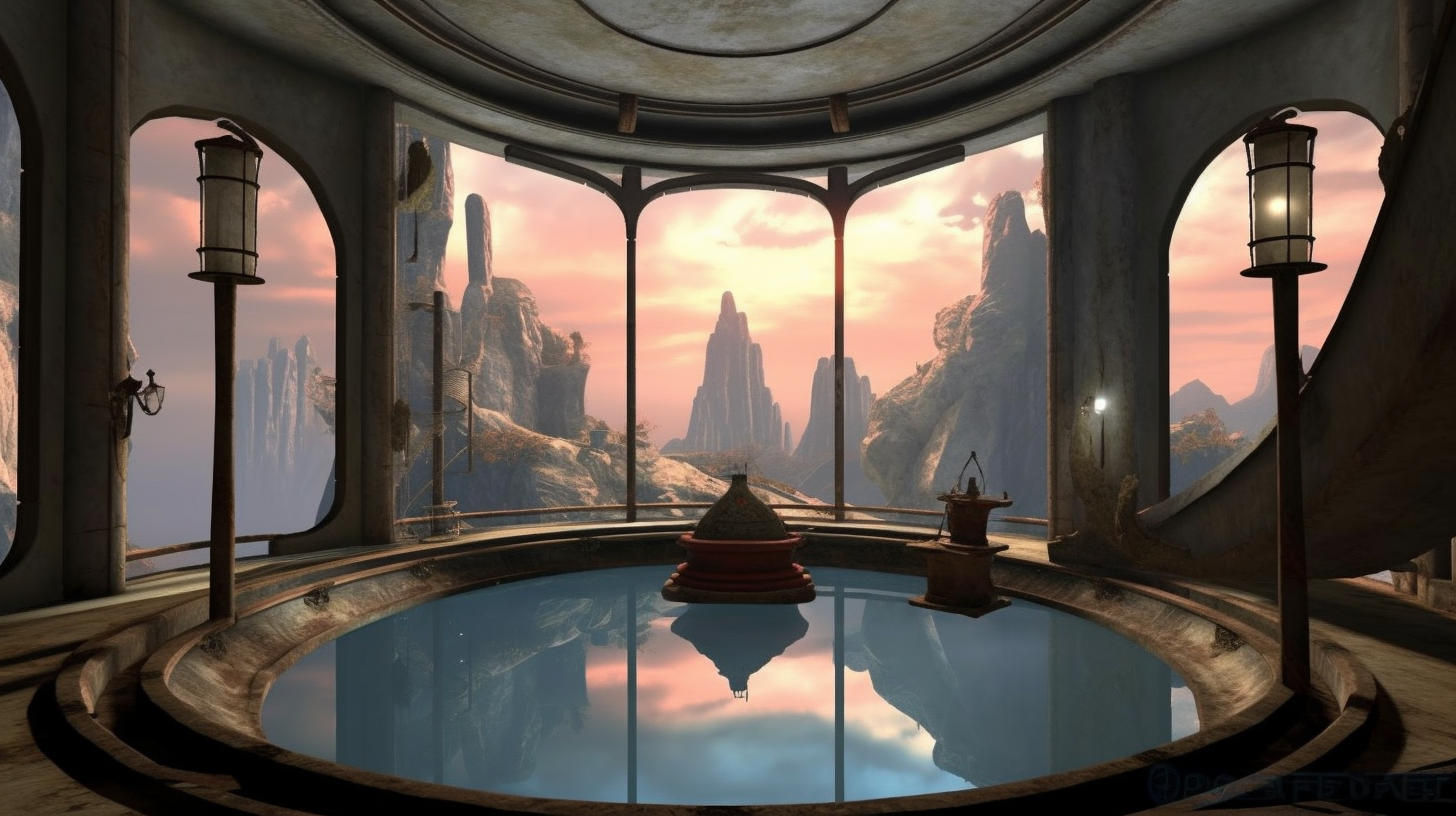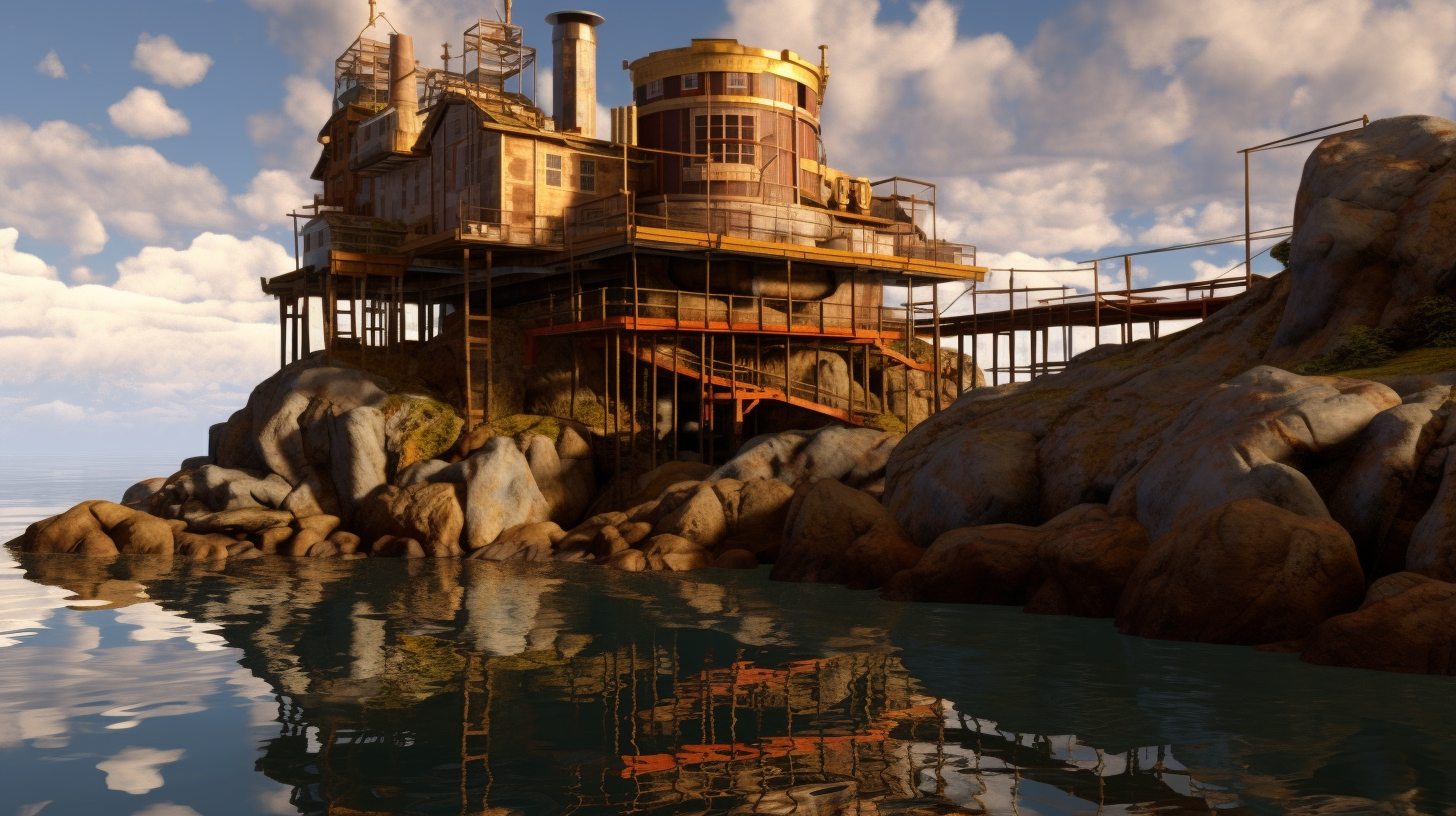DIGC1200 (Meta)Narrative Capstone: Positive Systemic Data Day Obsession
Overview
The final capstone project is presented as as multi-modal narrative tour of a virtual island, borrowing from my own digital language of the past in order to understand the present and chart a path forward into the future. In takes in a ‘letter to the editor’ in the form of a narrative script reflecting on the work of the past eight weeks, an audio narrative assembled in the form of applying the script to a soundscaped tour of a virtual island, and ends with a deep self-reflection inside a spaceship bound for the stars.
The work is presented as two versions. A full version which takes in thick reading dimensions of disciplined curiosity, critical consumption, world building and positive obsession. And an abridged version which articulates the main points contained in the broader whole. In Octavia Butler’s language, the abridged version is a dwarf star to the full version’s giant (Butler, 2003).
Also included here are the production notes, mind maps, audio clips, transcripts and generative pre-visualization work which went into the video’s production, as well as the original video the idea is based on from all the way back in 1998. I hope you enjoy spending time on the island (again) with me.
Choose a path:
Full Tour
Abridged Tour / Highlights
Production Notes: A Return To Myst Island, Twenty Five Years In The Making
In 1998 at the end of my Masters Degree program at The Jan van Eyck Akademie in Holland, I was required to present an overview of the work I’d done during my studies over the previous two years. When it came time for the colloquium, I took the game Myst, disassembled it from it’s original Hypercard stack, reassembled it in the object-oriented user model offered by the (much missed) Apple Media Tool, and hid all my work on the island. So when it came time to present, I simply gave the board a tour of the island. Projects were hidden in books in the library, appeared when you pulled a switch on a wall, or were hidden in clock towers, reflecting pools or instrument panels. Due to file size restraints at the time, I ran everything locally for the purposes of the presentation, but ultimately housed the project on a CD-ROM which acted as a centralized application launcher and prompted users to insert each respective disc.
Ever since I made this, I’ve longed to do it again. So, twenty five years later, where I now live and work in America, have a family of my own, and given the opportunity by The University of Pennsylvania’s DIGC1200 class, I am finally returning to Myst island. Again I will hide the work of the past eight weeks on the island, and for my capstone project, give a narrated tour of the island, my work, and the processes and projects I’ve thought about along the way. When thinking about my own meta-narrative, being able to borrow from my own digital language, in this case a language long lost to digital progress, is a joy to work on. Borrowing from concepts of retrograde analysis (Ashley, 2013), I already know what the end result will look like, so much of what I’m doing here is working backwards from the idea of an outcome I’ve already generated in the past.
Below is the original work from 1998:
I wrote of this shortly after my time at the Jan van Eyck:
This remains one of the most fun and rewarding things I’ve ever worked on. At the end of the two year study period at The Jan van Eyck Akademie in 1998, students were required to publicly present the arc of their efforts to the institution’s board of directors. Before I got to the Jan van Eyck I had never used a Mac, so I spent most of my time learning, absorbing and experimenting with what might be possible. I’d mainly focused on CD-ROM design, user experience experiments, and building small-scale websites, but during the second year I’d spent most of my time working on game design, mechanics, and large-scale environments.
This was one of the projects which contributed to my winning of the 1998 Jan van Eyck Purchases and Collections award, and my work being acquired by the institution for their permanent collection.
Generative Explorations for a Myst-Inspired Island
These were from an original idea of making my own generative island and hiding the work in it. Ultimately I dispensed with this idea in staying true to the original project from twenty five years ago, and used Myst island again. The difference this time was that the island I disassembled in order to hide the work is from the realMyst 2014 version, which uses a real time game engine instead of the original individual slides.
Prompt: hyper realistic very detailed screenshot from the video game Myst, immense details, --ar 16:9 --v 5.1
Myst Island Stills (From realMyst, 2014)
Artworked Meta-Narrative ‘Hidden’ Project Locations
Audio Library
Transcript: Arrival / Introduction
Hi everyone, and welcome to Myst island. For those of you who don’t recognize your surroundings, you’ve arrived at the beginning of one of the most famous video games of all time. Revolutionary in design back in 1993, Myst is an adventure game where players look to unravel a complicated mystery through solving puzzles and traveling to incredible locations. And like many of the places we’ve visited in class, it’s a space of searching, curiosity and discovery (Colmon, 2023a). A space of nonlinearity and capacity for creative engagement (Colmon, 2023b). Beautiful in both visual and sound design, the island had been built in 3D, and then transposed into thousands of slides which the player then used to navigate the island. It’s spawned a large number of sequels, and it genuinely, deservedly, a classic. I loved it then, and I still love it now.
In 1998 at the end of my Masters Degree program, I was required to present an overview of the work I’d done during my studies over the previous two years. When it came time for the colloquium, I took the game Myst, disassembled it from it’s original Hypercard stack, reassembled it, and hid all my work on the island. So when it came time to present, I simply gave the Akademie’s board a tour of the island.
Ever since I made this, I’ve longed to do it again. So, twenty five years later, I am finally returning to Myst island. Again I will hide the work of the past eight weeks on the island, and for my capstone project, give a narrated tour of the island, my work, and the processes and projects I’ve thought about along the way. It’s an editor’s love letter to the projects of the past, what I’m doing in the present, and a self-reflection on the future. It’s Sir Thomas More’s utopia of both good place and no place (More in Colmon, 2023c). A limbic digital space of neither here nor there. When thinking about my own meta-narrative, here I’m borrowing from my own digital language. Borrowing from concepts of retrograde analysis, I already know what the end result will look like, so much of what I’m doing here is working backwards from the idea of an outcome I’ve already generated in the past.
So welcome to my version of Myst, let’s get going. Our first stop is going to be the library, where a project about invisible data harvesting, and a day in the life of our friend Tim is waiting for us.
Transcript: The Library / The Typical Data Day
So here we are in the library, where all sorts of terrible unexpected things can happen to players in the actual game of Myst. It’s a good place to talk about unintended consequence, disciplined curiosity and drawing back the invisible cloak of persuasion architectures.
Inspired by Zeynep Tufecki’s TED discussion of the dystopian infrastructure of data collection and weaponization (Tufecki, 2017), I wanted to build a space of critical representation of a real-world example of this. A visualization of how common, yet unaware we often are of the digital footprints we leave in the world and apply it to ideas of critical consumption. To do this, I wanted to think of something incredibly normal. Something we all do. Something highly relatable. So I chose the framework of a typical day where we get up, go to work, come home, watch television and go back to bed. This not only gave the work the structure and sequencing of time, but also allowed me to be able to pick out individual ‘moments of gathering’ where data is being harvested from users in the most mundane of moments.
Through the format of an interactive choose-your-own adventure experience, I built a tool where users were encouraged to think critically about the common moments throughout their day in which digital information about them is being shared, and the economics of attention, often without their knowledge. From location, passwords and banking information to voice recognition, patterns of behavior and political orientation, the data harvested through persuasion architectures was surfaced and explored.
It used the language and rhetoric of the digital everyday to surface a conversation about the nature and extent of the data we are sharing simply by being digitally connected, and it was visually shaped through artificial intelligence tools such as MidJourney and ChatGPT, and implemented specific sequencing and pathing flows to produce different journeys through the day. I think that for as much data as we consume through the day, we’re also incredibly generous in the information we allow others to gather from us. It was left as an open question for users to decide if such a trade is equitable.
Once published, it was ready for peer review, where one of my colleagues suggested a moment where Tim gets physical or location data harvested from him through a fitness tracker. We added a moment after dinner where Tim had the choice of walking the dog, created the scene in the method the previous scenes had used, and added it into the interactive flow as a choice. You can see Tim doing this on the right hand side here. I gave Zeynep Tucfecki the last word on all this in my production notes, and I’ll do that same again here. She makes sure we understand what’s really going on here. She notes ‘Silicon Valley is run by people who want to be in the tech business, but are in the people business. They are way, way in over their heads’ (Tufecki, 2017).
Next we’ll head down to the island’s clock tower where a podcast about positive obsession through the lens of a British soap opera awaits us. Let’s go.
Transcript: The Clock Tower / Positive Obsession Podcast
What you hear is the opening of a positive obsession podcast I made about one of the things I’m truly, truly passionate about in life, the British soap opera EastEnders. This was just such a labor of love for me that the problem was really more one of stopping than starting. I can talk for a very, very long time about EastEnders, and the threat of actually unleashing a series of these on the world crossed my mind on many occasions. It’s also a good example of how I’ve been thinking about what would it look like to reframe and repurpose procrastination towards generative ends. I made most of this in a single day one weekend in late May. I’m an early riser, so I ordered some croissants from the local bakery, and got to work on it all around 8am, starting with laying out a mind map based on an initial outline generated by ChatGPT4. That gave me the skeleton on which to hang the individual dives into character, storylines, themes and cultural impact. Once I’d laid all of that out and sequenced it, I got to work writing the script. They say that if you truly love something, you can simply just ‘lose yourself to the music’. That’s what happened here. Before I knew it my family were knocking at my studio door asking about lunch. Once I’d laid everything out in written form, I also knew which sound clips had to go where, but I needed to source them in YouTube and get them downloaded so that I could use them for editing.
When Octavia Butler says that ‘an obsession is the domination of one's thoughts or feelings by a persistent idea, image, desire’ and explains that ‘obsession can be a useful tool if it's positive obsession. Using it is like aiming carefully in archery’ (Butler, 1989), I think that’s very true in my love of EastEnders. It’s obsession really in the sense that I can’t not do it. When it’s absent from my day, I somehow just don’t feel like me. And while that might seem odd in relation to a highly mediated product, it’s because its stories help to soothe the ache of homesickness. It connects to a past I’ll never return to, but a past which has been instrumental in shaping the present.
So, our next stop’s going to be just over the hill back near the ship where we first started, in the mechanical guts which run the island. Under the main gearbox I’ve hidden a book which lays out an argument for what generative artificial intelligence systems might learn from the three bs. Octavia Butler, adrienne maree brown, and the humble honey bee. Let’s go.
Transcript: The Island Gears / Participatory Futures
So here we are at the island’s gearbox, the mechanical beating heart of the island, and in the game itself, a portal to a place far away. In the book underneath the gears is my participatory futures project. Of all three of the capstones, this was the one I wrestled with the most. It’s a project which asks some big questions.
How can we save the world by avoiding systemic collapse of the very things which sustain us? Leaning on aspects of emergent strategy, biomimicry and learnings from degenerative collapse in the life sciences, I explored how small decisions drive large consequences, and how the risks posed by artificial intelligence might be solved by the most human of choices.
What I’m really interested in here is adrienne maree brown’s fractals-informed scaling of small problems as they magnify with use and lack of intervention (brown, 2017). We see this in the life sciences with colony collapse disorder (Henien & Langworthy, 2009), but we also see it in the emerging aspects of large language model collapse (Franzen, 2023), where both the natural and digital systems begin to collapse under the weight of synthetic consumption. My work wrestled with how problems scale from small to big, and ultimately proposed some safeguards for avoiding them. It’s a piece which stops at a number of places, rather than reaches a specific destination of definite conclusion. Don’t we need the big problems? Would we remove much of our sense of progress, innovation or achievement if all we were able to tackle were the small things in life? Don’t we need that sense of overcoming, of mission, of rewarded effort to feel at our most alive? Our most… human?
All of this is to say that in order to prevent small problems turning into big ones, we need to be able to arrest the transformative process by which this happens. The viral spread of disease is an apt metaphor here, and similar to Butler’s siphoning dwarf star, the manner in which the small pulls on the energy of the large leads us to such a conclusion as to diagnose the small in the first place (Butler, 2003). We need to catch problems earlier, faster, and more efficiently. Colony collapse in Florida bee colonies is better than the collapse of the entire human food chain, but identification and diagnosis in individual bees, or better still, preventative diagnosis in bees, is much better, and ultimately safer for everyone (Henien & Langworthy, 2009). The same is true of large language models. The ability for an algorithm to catch its own biases and correct them itself, is more efficient than humans catching them after millions of people are already using the service.
As with previous projects, this also began with a mind map, which we’ll visit shortly, which was going to play a central role in the argument I was going to make. But it also helped me wrangle a number of thoughts which wove together writings from Butler and brown, documentaries about colony collapse in bees, and contemporary writing about generative model collapse. I also knew I wanted to illustrate and present it as a New York Times opinion section piece, given that my audience was expressly identified as those with the power to actually affect the kinds of changes i was proposing in the real world. To do that, I wanted to do two things with generative products. Give the reader (or in this case listener), the opportunity to make the kinds of human vs. machine choices I was asking in the article for themselves, and to illustrate it with New York Times-level generative imagery. After I’d created the written article, I ran it through Descript, a voice bot trained on my own voice. I also recorded my actual voice reading the article. The reader can now choose for themselves which they prefer, echoing many of the thoughts and arguments proposed in the article. The imagery of the bees was generated in MidJourney.
When I say I wrestled with this, I must have edited this dozens of times over many days as my thinking evolved as I sat with the work. It wasn’t procrastination in the Tim Urban sense of making those spaces of inaction more productive (Urban, 2016), but it was really necessary to have the space to sit with what I’d done, and understand what needed to still change. This process was slow. Perhaps slower than I would have liked it to be. But what I found was that there’s enormous power in writing early, and then having the space the sit, really sit with it all. To think deeply about the order, the presentation, and how it might all be made stronger. That there is power in slow. Even this project, which was made over the course of a rainy weekend, has been tinkered with, tuned, and optimized for about ten days before being released to the world. For someone who spends their professional life in a newsroom, that can feel like an eternity.
OK, so we’re almost done with our tour, just a couple more stops to make. Earlier I promised that we’d spend some time with mind maps, so let’s head down to the bunker near where we began, to look at the five mind maps I made during the class.
Transcript: The Bunker / Mind Maps
So let’s talk a little about mind mapping here. I’ve used tools such as Figma before, but only really as tools of review, never for creation and ideation itself. And I’d never used Miro, which became the tool of choice for the class. Most of the way I organize my ideas comes organically through the act of writing itself. I’m a heavier editor than I am a concerted planner, and I like to lean on the method of figuring it out as I write. that doesn’t mean I don’t take notes or don’t organize my work in advance, of course I do that. But never to this extent, and certainly not explicitly visually this way. So this was a little outside of my comfort zone, but with obvious, immediate benefits. Being able to zoom out and see connections which would have been harder in linear writing or note-taking is an immediate benefit, but even the act of creating such an artifact ended up serving as a strong co-pilot for what needed to happen next. It bridged the spaces between material, my own thoughts, and ultimately what got made in a new and powerful way for me. Importantly, it also enabled me to extract the most salient points and arrange them in ways which were different from the original material, but augmented the sense-making required of the assignments. It helped me ‘see’ the material in ways which made more sense to me. So as a method of illumination, it became powerful.
A lot of what we’re talking about on the tour concerns meta-narratives, and the mind-mapping exercises certainly supported this the more I did them. They cumulatively built over time, and by the time I began to disassemble the island here, even began to borrow from previous mind maps to bring in prior mapping into current projects. As a tool of process expedience, they’ve served as a clarifying lens on an otherwise intensely complicated set of thoughts. Importantly, I’ve seen the light, and have already begun to build them into the work I do elsewhere both academically and professionally.
OK, so that leaves just one more spot to visit, where we need to talk about the future. What better place to do that than on a rocket ship? So let’s head over the the dock and spend some time looking inward, but also forward.
Transcript: The Spaceship / Self-Reflection
So here we are in our last stop on the tour before blasting off into the future, Myst’s rocket ship of self-reflection. The past two months have been challenging, inspiring, illuminating and magical. They’ve bright forward ideas of critical imagination (Colmon, 2023d) and world building which had always been there, but I’d never really sat with. Never really had the time and space to really practice thick thinking about the constellation of processes which are happening. My main lens through which I experience these ideas is through my work in the NBC newsroom, but this work is different. It’s less about me as an employee making professional decisions for the millions of users who engage with our products, and more about my conscious digital ethical choices, space shaping and awareness as a citizen. Much of what surrounds me is changed as a result of the class. I think about the world building of video games and the enormous periods of time I spend in them. I think about data harvesting and how easily we give up so much about ourselves. I think about the world my teenage daughter is going to inherit from the choices being made in the present about generative artificial intelligence. And I think about the uncertainty and unintended consequence of the technological implications for next year’s election.
Over the past few weeks, I’ve made several digital artifacts. An interactive virtual day. A positively obsessed podcast. A lengthy narrative about the bees. And a virtual space where I hid all these experiences. Underneath them all are hundreds of interactions with my colleagues, several mind maps, detailed consumption and note taking from videos, readings and audio recordings. Like an iceberg, what gets presented in the finish is only a fraction of what actually happened. But what did happen? I spent a lot of time thinking about the ethical consequences of the future and the responsibility we have in the present. How everything we see in the world has been dreamt up by someone else, and like adrienne maree brown, who are we to think we can’t change it? (brown, 2017). I’ve thought deeply about dreams (Butler, 2003), and how they manifest as both utopian aspiration and dystopian nightmare. And I’ve thought about my own work as a generative practitioner. Does my creative work with MidJourney mean something different now? What’s the difference between can and should when it comes to these things? What’s the difference between next and best? What might all of this look like a year from now?
As with all of my work, both inside and outside of class, and brought to life with this tour, these questions are only temporary stops, not destinations reached. Speaking of, it’s time to bid you all farewell, and blast off into the stars.
Till soon.
References:
Ashley, M. (2013). Working backward to solve problems - Maurice Ashley. YouTube.com. [Digital Video File]. Retrieved from: https://www.youtube.com/watch?v=v34NqCbAA1c.
brown, a.m. (2017). Emergent Strategy. Shaping Change, Changing Worlds. AK Press. [Digital File]. Retrieved from: https://static1.squarespace.com/static/5ad0d247af209613040b9ceb/t/5db5a44b0e6ba42da976cce7/1572185168567/brown+2017-Emergent+Strategy+full+book.pdf.
Butler, O. (1989). Positive Obsession in Kindred, Fledgling, Collected Stories. Library of America. [Digital File]. Retrieved from: https://storyoftheweek.loa.org/2021/01/positive-obsession.html.
Butler, O. (2003). The Book of Martha. SevenStories.com. Retrieved from: https://www.sevenstories.com/blogs/102-an-exclusive-short-story-from-octavia-butler-in-celebration-of-her-birthday.
Colmon, C. (2023a). DIGC 1200 Podcast: Episode 1 - Critical Consumption - (5:22 minutes). The University of Pennsylvania. [Digital Audio File]. Retrieved from https://canvas.upenn.edu/courses/1711611/pages/digc-1200-podcast-episode-1-critical-consumption-5-22-minutes?module_item_id=26672520.
Colmon, C. (2023b). DIGC 1200 Podcast: Episode 2 - Future Shock - (5:04 Minutes). The University of Pennsylvania. [Digital Audio File]. Retrieved from https://canvas.upenn.edu/courses/1711611/pages/digc-1200-podcast-episode-2-future-shock-5-04-minutes?module_item_id=26672521.
Colmon, C. (2023c). DIGC 1200 Podcast: Episode 7 - Media Mania - (6:48 Minutes). The University of Pennsylvania. [Digital Audio File]. Retrieved from https://canvas.upenn.edu/courses/1711611/pages/digc-1200-podcast-episode-7-media-mania-6-48-minutes?module_item_id=26672543.
Colmon, C. (2023d). DIGC 1200 DIGC 1200 Podcast: Episode 22 - Critical Imagination - (6:14 Minutes). The University of Pennsylvania. [Digital Audio File]. Retrieved from https://canvas.upenn.edu/courses/1711611/pages/digc-1200-podcast-episode-22-critical-imagination-6-14-minutes?module_item_id=26672634
Franzen, C. (2023). The AI feedback loop: Researchers warn of ‘model collapse’ as AI trains on AI-generated content. Venturebeat.com. Retrieved from: https://venturebeat.com/ai/the-ai-feedback-loop-researchers-warn-of-model-collapse-as-ai-trains-on-ai-generated-content/.
Henien, M. & Langworthy, G. (2009). The Vanishing of the Bees. Dogwoof Pictures. [Digital File]. Retrieved from: https://watch.plex.tv/movie/vanishing-of-the-bees.
Tufecki, Z. (2017). We're building a dystopia just to make people click on ads. TED Global. [Digital Video File]. Retrieved from https://www.ted.com/talks/zeynep_tufekci_we_re_building_a_dystopia_just_to_make_people_click_on_ads?language=en#t-35326.
Urban, T. (2016). Tim Urban: Inside the mind of a master procrastinator | TED. YouTube. [Digital Video File]. Retrieved from https://www.youtube.com/watch?v=arj7oStGLkU.
Mind Map
Direct link: https://miro.com/app/board/uXjVM7bar0U=/?share_link_id=229571231940
Link to overall class board mapping: https://miro.com/app/board/uXjVMGkGPgs=/


